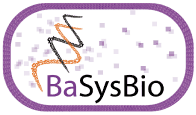
Max Planck Institute for Molecular Genetics (MPIMG)
 |
Location : Berlin / D |
| Leader : N/A | |
| Website : http://www.mpg.de/english/portal/index.html |
- Short Description of the institution:
The Max Planck Society for the Advancement of Science, founded in 1948, is an independent, non-profit research organization that primarily promotes and supports research at its own institutes. The research institutes of the Max Planck Society perform basic research in the interest of the general public in the natural sciences, life sciences, social sciences, and the humanities. In particular, the Max Planck Society takes up new and innovative research areas with focus on interdisciplinary research.
The research of Max Planck Institute for Molecular Genetics has focussed on DNA replication, gene regulation, functional genomics, and lately on bioinformatics and systems biology. The institute has four departments and independent research groups. The Department of Vertebrate Genomics (Hans Lehrach) generates the tools and information to understand the function of most or all genes of man and other organisms. The Human Molecular Genetics Department (Hans Hilger Ropers) searches for disease genes and their biological function. The Department of Computational Molecular Biology (Martin Vingron) exploits the generated data to better understanding of biological and disease processes. The Department of Developmental Genetics (Bernhard Herrmann) uses the systematic functional analysis for understanding developmental mechanisms. The institute plays an active role in the German National Genome Research Network and other government funded genome research activities.
Description of the different units involved in the project/ Competences of the team in the project:
The Kinetic Modelling Group performs research in the field of computational systems biology. It is active in the area of mathematical modelling of biological systems including dynamic systems theory, simulation methods (deterministic, stochastic) and tools, optimization approaches, and parameter estimation. We focus on modelling of specific pathways (signal transduction, gene expression, cell cycle and metabolism) in close collaboration with experimental researchers. They develop methods for the mathematical analysis of the dynamics of biochemical networks, the integration of heterogeneous data into the models, parameter estimation, and the prediction of optimal experimental design. Comprehensive models including various levels of cellular regulation are used to explain biological phenomena in the model organism yeast, but also for selected pathways in other organisms.
- Key persons involved in BaSysBio:
Dr. Edda Klipp received her doctoral degree in Theoretical Biophysics at the Humboldt University Berlin in 1994. She is head of the Kinetic Modelling Group at the Max Planck Institute for Molecular Genetics in Berlin, Germany. Her research interests include structural properties of biochemical networks, thermodynamic constraints, as well as optimization, evolution and design of biochemical networks and their dynamics. Now, she theoretically investigates biochemical networks to understand cellular stress response. In collaboration with experimental groups, she designed the first dynamic model for the response of yeast cells to osmotic stress that involves signal transduction, change in gene expression, and metabolic regulation at the same time. Dr. Klipp is partner of several EU projects, associate editor of various scientific journals, referee for funding organizations, and co-organizer of conferences on Systems Biology. She has co-authored the first textbook in the field: Systems Biology in Practice.
Dr. Wolfram Liebermeister got his PhD in Theoretical Biophysics at the Humboldt University Berlin in 2004. He is Post-Doc in the Kinetic Modelling Group. His work focuses on the development of approaches and tools to analyse, process, and revise dynamic computational models of cellular networks. He developed the Independent Component Analysis as well as model integration and segregation methods.
Show all the institutions